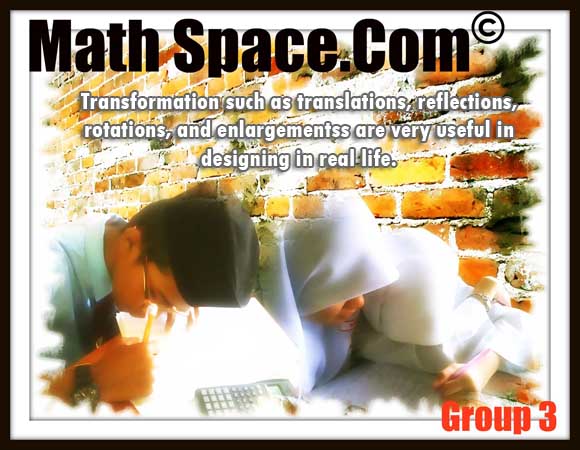
Wednesday, October 14, 2009
Lesson Plan Logic Version 3 (LGV 3)
LOGIC VERSION 3
Step 1 – in induction set, we use a clock model, a picture and an example as a learning materials. Based on the learning materials, teacher explains the main point about the concept of rotation, translation and reflection.
a) The concepts of rotation is students should know what is the direction of rotation whether clockwise or anticlockwise, angle of rotation and the fixed point of the rotation.
b) the concepts of translation is students should know about the coordinate of the object on the plane and the direction of the translation



